#Nobel Prize for Medicine
Explore tagged Tumblr posts
Text
"Millions of Lives Saved"?
by Dr.Harald Wiesendanger– Klartext What the mainstream media is hiding Have mRNA vaccines against Covid-19 “saved millions of lives”? That’s why the 2023 Nobel Prize in Medicine was awarded. It honors a hair-raising lie “based on a junk simulation financed by industry,” according to two scientists from Canada. It has now been quoted over 700 times in the specialist press worldwide, and…

View On WordPress
#Corona#Correlation Research in the Public Interest#Covid-19#David Hickey#Denis Rancourt#Harald Wiesendanger#Mortality#Mortality rate#mRNA vaccines#Nobel Prize for Medicine#Peer Review#Science#Vaccination campaign
0 notes
Text
The Nobel Prize in medicine was awarded Monday to Americans Victor Ambros and Gary Ruvkun for their discovery of microRNA, a fundamental principle governing how gene activity is regulated. The Nobel Assembly said that their discovery is "proving to be fundamentally important for how organisms develop and function."
Continue Reading.
58 notes
·
View notes
Text
love that marcille saw how miserable the ppl of the golden kingdom were that every one who had memories of living on the surface choose death rather than living for 1000 years and * she still was like im gonna wish for everyone to live 1000 years bc i know better than any one bc I am alone in my experiance AND i read it in a book once and got an A+ in that class.
i mean to decide to violate the autonomy of everyone on the planet. That takes vision. That takes ambition. #womeninSTEM
*under extreme duress and manipulation. She backslid.
21 notes
·
View notes
Text
I studied small RNAs in my PhD thesis and I cited Rosalind Lee in all my papers, introductions, seminars etc. as R. Lee et al. for her touchdown findings in posttranscriptional regulation. I don't get how she isn't recognized by Nobel committee. It might be because she isn't a tenured Prof with her own lab, cause they hate scientists outside academia
9 notes
·
View notes
Text

The first Nobel Prizes were awarded on December 10, 1901, which was the fifth anniversary of the death of Alfred Nobel.
Nobel was a Swedish scientist, inventor and businessman who was also passionate about writing drama and poetry. He is particularly notable as the inventor of dynamite and other high explosives, and held more than 350 patents in his lifetime.
When Alfred Nobel wrote his will in 1895, it established that prizes would be awarded each year to commemorate and honor those who made significant achievements in the areas of science, medicine, literature and peace.
#12/10#alfred nobel#nobel prize#1901#1900s#swedish#scientist#inventor#businessman#patent holder#dynamite#science#medicine#literature#peace#google arts & culture#daysoftheyear.com#stem#nobel peace prize#philanthropy#philanthropist#photography#b&w#history
3 notes
·
View notes
Text
Chemistry Behind Bacterial Disease

🔬In the early 20th century, bacterial diseases were a death sentence! But in 1932, Gerhard Domagk discovered the power of prontosil, a colorful azo dye, to treat deadly streptococcal infections. He saved his daughter's life and won the Nobel Prize in 1939🏆
Prontosil is an antibacterial drug of the sulfonamide group. It has a relatively broad effect against gram-positive cocci but not against enterobacteria.

#bacteria#disease#chemistry#organicchemistry#molecule#nobel prize#medicine#did you know#true facts#chemblr#stemblr
37 notes
·
View notes
Text

Gerty Cori was born on August 15, 1896. An Austro-Hungarian-American biochemist who in 1947 was the third woman to win a Nobel Prize in science, and the first woman to be awarded the Nobel Prize in Physiology or Medicine. With her husband Carl and Argentine physiologist Bernardo Houssay, Gerty Cori received the Nobel Prize in 1947 for the discovery of the mechanism by which glycogen—a derivative of glucose—is broken down in muscle tissue into lactic acid and then resynthesized in the body and stored as a source of energy (known as the Cori cycle). They also identified the important catalyzing compound, the Cori ester.
#gerty cori#medicine#energy#nobel prize#nobel prize winners#women in science#women in history#science#science history#science birthdays#on this day#on this day in science history
22 notes
·
View notes
Text
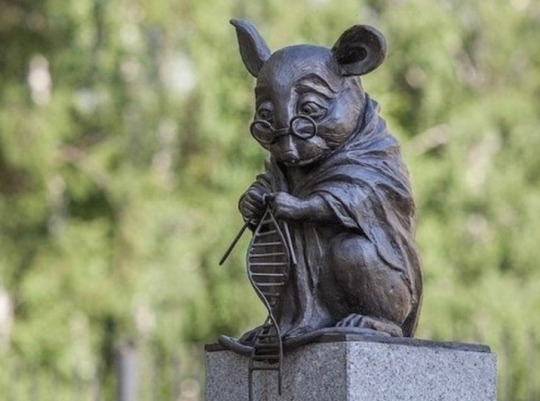
A bronze statue of a laboratory mouse knitting a double helix of DNA in order to honor all the mice that were sacrificed for genetic research to develop new drugs to fight diseases.
It was designed by Andrew Kharkevich and is located in Siberia, Russia.
The monument was completed on 1 July 2013, coinciding with the 120th anniversary of the founding of the city.
The monument commemorates the sacrifice of the mice in genetic research used to understand biological and physiological mechanisms for developing new drugs and curing diseases.
Sculptor Alexei Agrikolyansky, who created the statue, confessed that it was challenging to capture this moment, as the mouse was obviously not human.
Nevertheless, he had to produce a character with believable emotions while maintaining anatomical proportions, avoiding it looking like a cartoon character or a real mouse.
The DNA spiral emerging from the knitting needles winds to the left, symbolizing the still poorly understood Z-DNA - representing the scientific research that is yet to be done.
In contrast, the more common B-DNA winds to the right.
The very first photograph of DNA was captured by a woman named Rosalind Franklin (25 July 1920 – 16 April 1958) using X-ray technology, allowing James Dewey Watson (born April 6, 1928) and Francis Harry Compton Crick OM FRS (8 June 1916 – 28 July 2004) to accurately characterize the double helix.
While they went on to win the Nobel Prize in Physiology or Medicine in 1962, Franklin was not credited.
Sadly, she had passed away in 1958 from ovarian cancer, most likely caused by the high radiation exposure she endured while working with X-rays to capture the image of the double helix.
🤎🤍🤎
#DNA#mice#genetic research#Andrew Kharkevich#Alexei Agrikolyansky#scientific research#Z-DNA#B-DNA#Rosalind Franklin#James Dewey Watson#Francis Harry Compton Crick#double helix#Nobel Prize#science#Nobel Prize in Physiology or Medicine#laboratory mouse
18 notes
·
View notes
Text
do y’all have those things you do with your parents that are so routine that you forget that it’s not “normal”?
because for me it’s definitely that my dad and i email each other memes. and not in a “my dad is technologically inept” way, my dad has an engineering degree and has worked in tech for over 3 decades. no it’s more of a “he’s TOO technologically literate to not email me memes” way.
he only has facebook on his computer, so instead of figuring out how to get the memes to his phone to text them to me, he saves the images and emails them to me. and i love it but i do oftentimes forget that getting emails with shitpost memes from your father isn’t exactly normal
#and when i tell you he emails me memes i need you to understand that he is emailing me the most shitposty shitposts#with the exception of dog pictures he does email me dog pictures and silly dog memes too#but usually it’s nerdy ass shitposts because he knows me so well#and also that he too is a nerdy ass person and he thinks the memes are funny too#like i open my email and 8/10 it’s gonna be some joke abt ‘Muad’dib the Messiah aka Paul Atreides 16 Year Old Boy on Drugs’#other 2 times out of 10 is a dog or a link to New Science Thing of the Week#because we’re nerds like that too#(he emailed me the Nobel Prize in Medicine’s press release only for me to tell him i’d read all the releases for the science prizes already#anyway#just some lore about my dad#he’s such a silly man sometimes#and i love him
9 notes
·
View notes
Text
Queen giving birth in warriors: ahhh oooh ouch it hurts so bad
Medicine cat:

#warrior cats#like you guys have been practicing medicine for 50+ years and this is still the best you can do…smh#now im imagining the first medicine cat to come up with the stick strategy getting the warrior cats version of the Nobel prize for medicine#in honor of this groundbreaking discovery
4 notes
·
View notes
Text

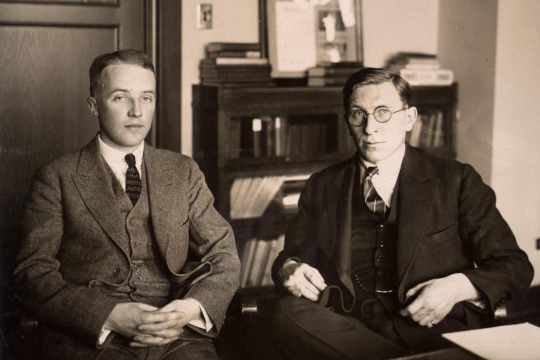
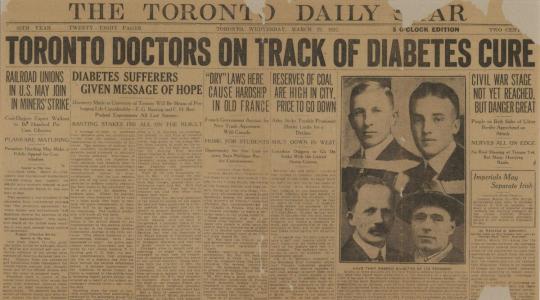

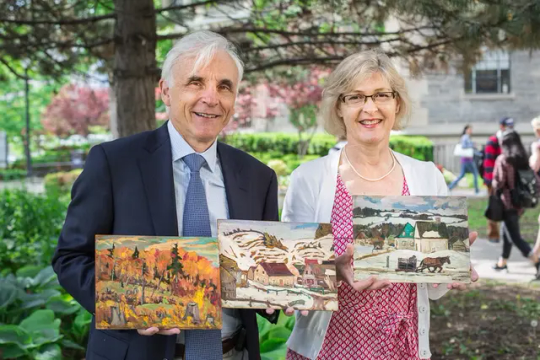

Frederick Banting – Scientist of the Day Frederick Banting, a Canadian physiologist, was born Nov. 14, 1891. Learn more
#Frederick Banting#physiology#medicine#Nobel prize#insulin#histsci#histSTM#20th century#history of science#Ashworth#Scientist of the Day
3 notes
·
View notes
Text

0 notes
Text

0 notes
Video
youtube
Announcement of the 2024 Nobel Prize in Physiology or Medicine
0 notes
Text
Nobel Prize Nomination
For the 2025 Nobel Prize in Physiology or Medicine I'd like to nominate all of the graduate students in those fields who have spent literally millions of hours doing painstaking, detailed, difficult, and bizarre tasks and experiments. Science (and math) is a team effort. Prizes to individuals do not make much sense. In 2010, Grigori Perelman declined the $1,000,000 Clay Prize for his proof of the Poincare Conjecture, because he considered it unfair for one individual to be rewarded for it. I've been thinking about that truly remarkable act ever since; I think we need to reconsider the entire structure of how we reward scientific research in light of how it is a communal effort.
1 note
·
View note
Text
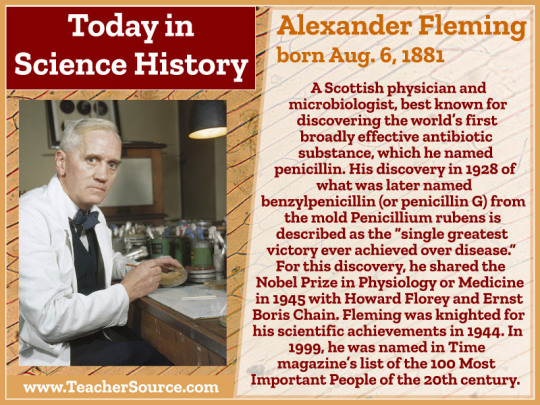
Alexander Fleming was born on August 6, 1881. A Scottish physician and microbiologist, best known for discovering the world's first broadly effective antibiotic substance, which he named penicillin. His discovery in 1928 of what was later named benzylpenicillin (or penicillin G) from the mold Penicillium rubens is described as the "single greatest victory ever achieved over disease". For this discovery, he shared the Nobel Prize in Physiology or Medicine in 1945 with Howard Florey and Ernst Boris Chain. Fleming was knighted for his scientific achievements in 1944. In 1999, he was named in Time magazine's list of the 100 Most Important People of the 20th century.
#alexander fleming#antibiotics#penicilln#medicine#nobel prize#nobel prize winners#science#science history#science birthdays#on this day#on this day in science history
14 notes
·
View notes